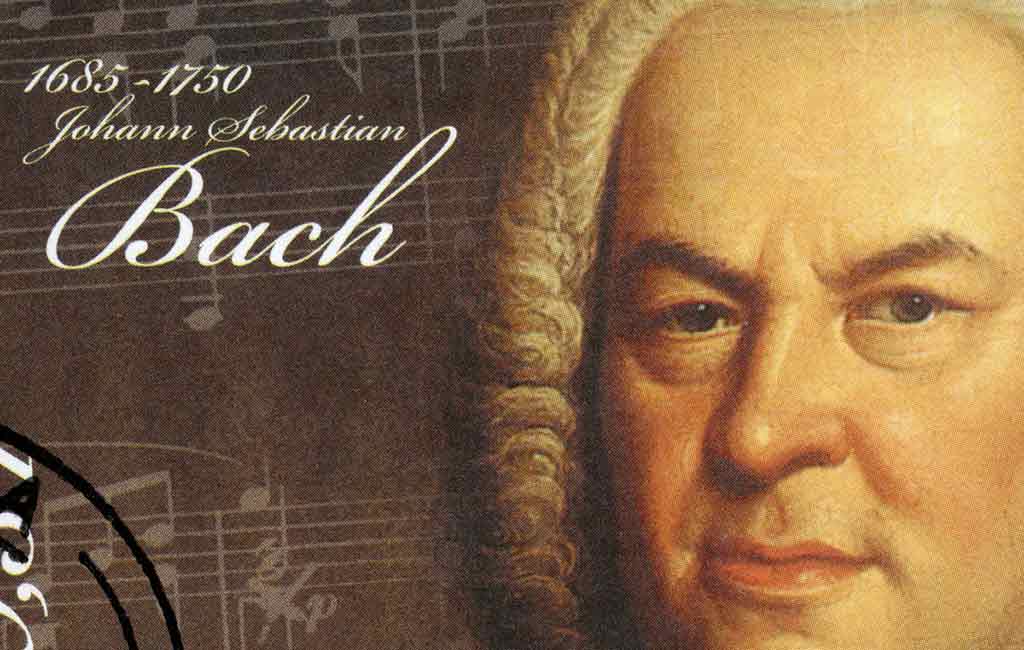Johann Sebastian Bach (“Bach” in German means a “water stream”) is a german composer from the 18th century. He was born in 1685 and he started performing from the early age of his life. The banning of the painting by protestants in medieval Germany – gave a big chance to a young church organist. So, the talented composer and Johann Sebastian Bach rapidly started his professional performances at the age of 18, at the beginning of the 18th century in 1703. He played in Protestant churches in Arnstadt and Mühlhausen and at courts in Weimar and Köthen, where he continued composing and also expanding his organ repertory significantly…
The more I listen to music, the more I appreciate Bach…! – So many times heard sentence by so many great composers musicians and artists over the last centuries… Bach is creating in a baroque manner but in already times of musical changes in the mainstream of the time. Periods were changing from Baroque, shortly over Rococo into Classical, while Bach stayed consistent with the polyphonic voice-chasing composing style like he was doing “a hundred years ago”. He literally fulfilled the gap that was missing in Baroque. But in so beautiful way, that he literally turned the attention of all mankind towards the true values and the beauty of polyphony once more, just when it was about to become forgotten.
Music during that era was turning from polyphonic to monophonic, from “voice-chasing” onto leaning on “pre-established harmonic blocks” – chords. It was a change that was inevitable to happen, because of the advancement of precision instruments and now the well-tempered harmonic instruments were evolving (the “pianoforte” (piano), first of all), besides the melodic instruments (winds, and bowed strings…). He wrote the two books of 24 Fugues and Preludes, for well-tempered piano, that was a real game-changer. It is the crucial work that helped to spread over the entire planet the very well-tempered musical system that we use today…
Johann Sebastian Bach brought such a contribution, that he literally brought the entire mankind a few steps back, telling us “look, guys, this is how the composing was supposed to be in Baroque! – now you can continue with your boring Classicism…!)
When analyzing harmonically many of Bach’s works, we can see that the entire music styles of today are sometimes based just on a few negligible cadences Bach wrote even by accident sometimes… Of course, every composer in music history had at least one piece (if not a whole opus) dedicated to the “father of modern music” – Johann Sebastian Bach. Not just to show his respect, and Bach’s unavoidable influence on his own composing style, but to announce that from the fountain of inspiration Bach’s work is, there is an inexhaustible amount of ideas that can be drawn from, and worked on them later, in whatever modern contemporary style.
This playlist of Andres Segovia Master Class videos is A TRUE TREASURE TO FIND..! He is playing together with several guitarists, mainly Renaissance and Baroque guitar pieces. All the pieces were initially written for ancient medieval lute so in the process of transcription sometimes resulted in losses of material, bad and misunderstood transcriptions, e t.c… Besides his questionable understanding of “kontrapunkt”, (counterpoint), manner of composing, I must admit that his energy and gravity of the emotion is the best felt, (I searched all youtube…) Beneath are some examples of “how NOT to play Chaconne in d minor“. This is a totally pianistic approach, but without taking at all the violinist’s expressions into consideration. The tempo should be much more stretchy, you can not use SO MANY OPEN STRINGS, but the most important is – but first, you must understand what grandeur this piece that was written for violin – means for the violin itself. Then, and ONLY THEN – you can proceed to make your own transcription for the guitar, and ONLY THEN YOU CAN DARE TO TRY TO PERFORM IT. What I really can not believe is that Segovia allowed himself to play and add bass notes under Bach’s music – the way he pleased…?!? And that he let himself WRITE BASS NOTES – WITHOUT KNOWING ANY KONTRAPUNKT…?!? – THAT IS JUST – UN FORGIVABLE…!!! When we take Segovias transcriptions of Bach’s pieces, we can see that HE HAD A VERY LITTLE IDEA OF THE KONTRAPUNKT… But he gave himself the liberty of adding bass notes, wherever he thought the might “sound nice”, or I don’t know even how else to call that madness he did…

